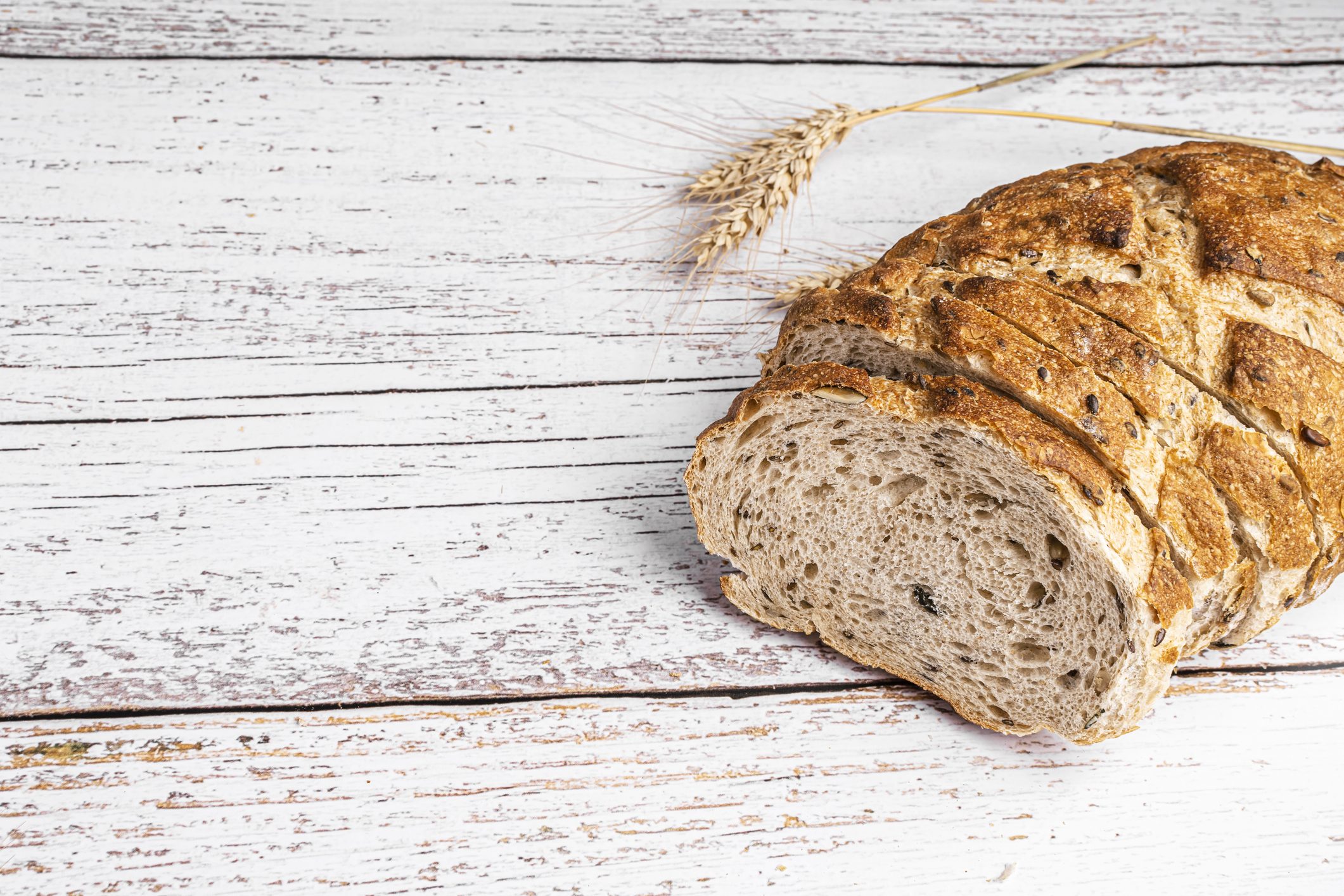





Which Bread Is Lowest On The Glycemic Index?


When it comes to choosing the right type of bread, it’s important to consider the glycemic index. The glycemic index (GI) is a measure of how quickly carbohydrates in food are broken down and digested and how this affects your blood sugar levels.
Low GI foods are digested and absorbed more slowly, leading to smaller increases in blood sugar levels. So, let’s find out the best breads for diabetics which has the lowest GI? Let’s find out – and learn how to make smarter choices when it comes to bread.
What Is the Glycemic Index?
The glycemic index (GI) is a scientific tool used to measure how a particular food affects blood sugar levels. The index ranks carbohydrates on a scale of 0 to 100, with 100 being the highest. Foods with a high GI are digested quickly, causing a rapid rise in blood sugar. Foods with a low GI are digested more slowly, resulting in a slower rise in blood sugar.
Knowing which foods are low on the glycemic index can be helpful for people with diabetes, pre-diabetes or are at risk for developing diabetes. Foods are scored on the GI based on how quickly their carbohydrates are digested. The faster a carbohydrate is digested the higher it is scored on the glycemic index.
For example, white bread has a higher GI than whole wheat bread because the body processes the carbohydrates in white bread more quickly. Additionally, certain types of carbohydrates such as those found in some fruits and vegetables, are digested more slowly and therefore have a low GI. Glycemic index is not the only factor to consider when choosing foods.
It is important to remember that while some carbohydrates may have a low GI they may still contain a large amount of sugar and calories. Although, diabetics can eat bread but eating a balanced diet is the best way to ensure that all of your nutritional needs are met.
What Are the Lowest Glycemic Index Breads?
When it comes to bread, it’s important to choose a variety that falls low on the glycemic index. When choosing bread, don’t forget to read the label and make sure the bread you’re buying is low in sugar and high in fiber. The higher the fiber content the lower the glycemic index of the bread so choose wisely.
Rye Bread
Rye bread is known for being lower in gluten than other types of bread but it also has lower levels of sugar than other types of bread. Rye bread has a low glycemic index and is a healthy choice for those looking to regulate their blood sugar levels. Rye bread is made with a mixture of rye flour and wheat flour and is typically darker in color than wheat bread.
Rye has a slightly sour taste, not unlike sourdough which many people enjoy. Rye bread is light in texture with a slightly chewy bite. Rye bread has a lower glycemic index than other types of bread, because it is digested slowly. This makes it a good choice for diabetics and people with other blood sugar-related conditions.
Studies have shown that rye bread can help to stabilize blood sugar levels which can help to reduce the risk of developing diabetes. Rye bread is also high in fiber, making it a healthy option for people looking to maintain a healthy diet. Rye is also an excellent source of essential nutrients such as B vitamins, iron, magnesium and zinc.
Rye bread is best enjoyed with a variety of toppings such as peanut butter, cream cheese, smoked fish, vegetables or as a sandwich. While rye bread is a good choice for many people looking to regulate their blood sugar levels, it should be noted that rye bread is still relatively high in calories compared to other types of bread.
Multigrain Bread
Multigrain bread is made from several grains such as wheat, oats, barley and rye. Grain types used in multigrain vary from one bakery to another so it is important to read the ingredients to know what type of grains have been used. Generally, most multigrain breads are made from ingredients that have a low glycemic index.
This is because grains contain complex carbohydrates which are broken down more slowly in the body than refined carbohydrates such as white flour. Multigrain bread is a great choice for those wanting to keep their blood sugar levels balanced. It helps to regulate blood sugar levels, providing sustained energy throughout the day.
Studies have shown that multigrain bread helps to reduce the risk of diabetes and cardiovascular disease. In terms of nutrition, multigrain bread is a great source of fiber, protein and essential vitamins and minerals. It is also lower in calories than white bread. Many multigrain breads are enriched with added nutrients such as iron, folate and B vitamins.
When buying multigrain bread, it is important to check the label and look for whole grains as the first ingredient. Whole grains are a good source of vitamins, minerals and fiber and do not raise blood glucose levels as quickly as refined grains.
It is also important to look for “low GI” on the label as this indicates that the bread is more slowly digested and absorbed, providing more sustained energy. Overall, multigrain bread is a great choice for those wanting to keep their glycemic index low. It is a nutritious and filling food that provides sustained energy and keeps blood sugar levels balanced.
SugarMD Advance Glucose Support
Maintaining healthy blood sugar levels can be a challenge. From carby meals to snacks and even with all the effort, it’s still not enough. That’s where SugarMD Advanced Glucose Support comes in.
Our blend of traditional Ayurvedic herbs helps regulate blood sugar levels, curbs cravings, supports weight loss, boosts metabolism and energy. Endorsed by endocrinologists, this unique formula of pure, potent herbs promotes overall blood sugar health. Ideal for both pre-diabetics and Type 2 diabetics.
Oat Bread
Oat bread is a nutritious and tasty option for those looking to reduce their glycemic index. It is made from ground oats and other grain flours which are high in fiber and low in sugar. Oat bread is considered a moderate glycemic index food, with a rating of 55. This means that it is not overly processed and does not cause a rapid spike in blood sugar levels.
When looking for oat bread, choose varieties that are made with 100% whole-grain oats and are minimally processed. Make sure to check the ingredients list to ensure there are no added sugars or other unhealthy ingredients. Additionally, seek out oat bread that is certified organic, non-GMO and free of preservatives.
Sourdough Bread
Sourdough bread is a type of bread that is made using the fermentation of wild yeast and lactic acid bacteria. It is usually made from wheat flour and natural leavening agents such as dried yeast, lactic acid and water. Sourdough bread has a unique, tangy flavor and a dense, chewy texture. The fermentation process also results in the bread having a low glycemic index which means that it is slowly digested and absorbed into the bloodstream, helping to maintain steady blood sugar levels.
Sourdough bread is also high in fiber which helps to slow down the digestion process and stabilize blood sugar levels. It is also a good source of essential vitamins, minerals and antioxidants. For these reasons sourdough bread is often considered a healthier option than other types of bread.
| Bread Type | Glycemic Index |
|---|---|
| Rye Bread | 41-46 |
| Multigrain Bread | 48-53 |
| Oat Bread | 48-58 |
| Sourdough Bread | 53-58 |
Conclusion
In conclusion, understanding the glycemic index of bread is an important factor to consider when making decisions regarding a healthful diet. Rye bread, multigrain bread, oat bread and sourdough bread are just a few of the lower glycemic index breads that can be used to substitute for more traditional white breads that have a much higher glycemic index.
All types of breads have their own unique flavors and textures so experimenting with a variety of breads can make it easier to find one that best fits into your diet and lifestyle. For those looking to reduce the glycemic index of their diet these types of breads can be a great way to do so while still enjoying a tasty and varied diet.
About The Author
Meet Dr. Ahmet Ergin a highly skilled and dedicated endocrinologist with a passion for diabetes care. Dr. Ergin earned his medical degree with honors from Marmara University in Istanbul. He completed internal medicine residency and endocrinology fellowship at Cleveland Clinic.
Dr. Ergin is board-certified in Internal Medicine, Endocrinology, Diabetes and Metabolism due to his vast medical expertise. He's a certified diabetes educator, author of "The Ultimate Diabetes Book," and founder of "the SugarMD YouTube channel."
Dr. Ergin offers exceptional diabetes care to his patients in Port Saint Lucie, FL, helping them manage effectively. Disclaimer: The website's disease and treatment info is general guidance and not a substitute for professional healthcare advice. Seek professional advice for personalized diagnosis and treatment plans to ensure accurate and effective care. Consult a qualified healthcare professional for any questions about your health and wellness.
Written By Dr. Ahmet Ergin
461 total articles
Meet Dr. Ahmet Ergin, a highly skilled and dedicated endocrinologist with a passion for diabetes care. Dr. Ergin earned his medical degree with honors from Marmara University in Istanbul. He completed internal medicine residency and endocrinology fellowship at Cleveland Clinic. Dr. Ergin is board-certified in Internal Medicine, Endocrinology, Diabetes, and Metabolism due to his vast medical expertise. He's a certified diabetes educator, author of “The Ultimate Diabetes Book,” and founder of “the SugarMD YouTube channel.” Dr. Ergin offers exceptional diabetes care to his patients in Port Saint Lucie, FL, helping them manage effectively. For a closer look into his insights and experiences, connect with Dr. Ahmet Ergin on LinkedIn, Instagram, and YouTube.”
Disclaimer: These statements have not been evaluated by the Food and Drug Administration. Information on this website isn't intended to treat, cure or prevent any disease. Discuss with your doctor and do not self-treat.
Products











